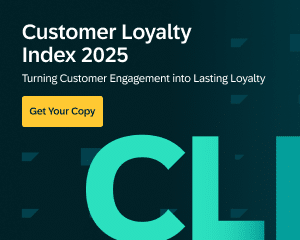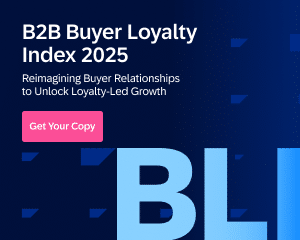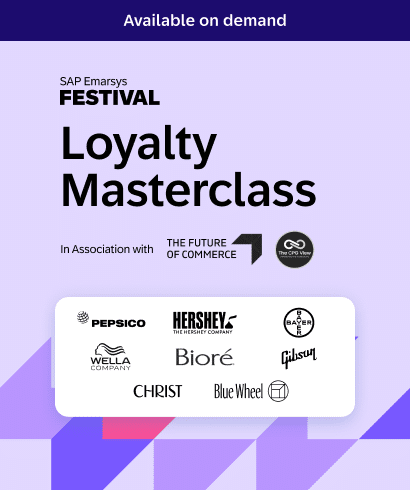To stay competitive, marketers need more than channels and content. They need a strategy that connects the entire customer journey.
Lifecycle marketing offers a structured approach to engage customers at every stage of their journey, using data, automation, and personalization to drive outcomes that matter.
In this article, we’ll break down the key stages of the marketing lifecycle and explore advanced strategies to optimize each one. You’ll see how leading brands are using lifecycle tactics to increase retention, boost revenue, and scale personalization without increasing complexity.
Why Lifecycle Marketing Is the New Growth Playbook
Lifecycle marketing provides a clear framework to turn complexity into clarity by aligning messaging, channels, and data around every stage of the customer journey.
When you look at the numbers, they paint a clear picture of just how important customer lifecycle marketing is:
- Omnichannel experience: 73% of customers say experience is a key factor in buying decisions – just behind price and product quality. In the U.S., 65% say a positive experience matters more than great advertising (PwC).
Analytics as a growth lever: The customer journey analytics market is projected to reach $25.1 billion by the end of 2026, reflecting its growing role in driving performance marketing and predictive engagement (MarketsandMarkets).

How to Optimize Every Stage of the Lifecycle
High-performing customer journeys aren’t built on guesswork. Each stage of the lifecycle presents unique opportunities to engage, convert, and retain customers. By applying advanced strategies at key moments, marketers can turn intent into action and build loyalty that lasts.
1. Predict and act on customer intent in real time
Customers leave signals everywhere, and browsing behavior, click patterns, and revisit frequency all reveal intent. Predictive models help you anticipate the next move and deliver timely, relevant experiences that keep customers moving forward.
For example, a returning visitor exploring premium products could trigger a personalized offer paired with loyalty program enrollment, turning interest into a high-value conversion.
2. Orchestrate cross-channel campaigns with adaptive timing
No two journeys look the same. Adaptive orchestration ensures your messaging aligns with individual behavior instead of arbitrary schedules. Using omnichannel workflows, you can adjust timing across email, SMS, push, and in-store touchpoints to reflect real-time engagement.
A shopper who clicks but doesn’t convert might get a push reminder, while a dormant subscriber enters a win-back journey via SMS.
3. Prioritize high-impact actions with lifecycle scoring
Lifecycle scoring surfaces your most valuable, and at risk, customers. By analyzing behavioral and transactional signals like recency, frequency, and lifetime value, marketers can focus resources on the segments that matter most.
A customer with declining engagement but high historical spend, for instance, can be automatically enrolled in a reactivation campaign featuring exclusive offers.
4. Automate re-engagement based on behavioral triggers
Waiting too long to reconnect risks losing customers for good. With behavioral thresholds in place, you can identify when a customer starts to lapse and launch tailored reactivation efforts.
Someone who hasn’t opened an email in 60 days but shows high order value could receive a curated product selection and limited-time incentive to bring them back.
5. Use contextual content to deepen relevance
Static content won’t keep up with dynamic customer journeys. Contextual content adapts messaging based on factors like lifecycle stage, location, device, and seasonality, delivering personalized relevance at scale.
A loyalty email, for example, can automatically display tier-specific benefits and geo-targeted offers, creating a more meaningful experience for every recipient.
6. Capture and convert interest with progressive profiling
Early-stage prospects need a low-friction path to engagement. Progressive profiling helps you turn anonymous traffic into known users by collecting small pieces of data over time.
A product quiz or gated content can kick off the relationship, while each subsequent interaction gathers more insight to power personalized campaigns and accelerate conversion.
Customer Lifecycle Strategies in Action
Here’s how leading brands are applying lifecycle marketing strategies to simplify complexity, increase engagement, and drive measurable outcomes.
New Balance: Driving loyalty with omnichannel lifecycle strategy

New Balance is a globally recognized athletic brand that operates across digital, direct-to-consumer, and retail partner channels.
Challenge: Increase customer lifetime value and loyalty without relying on discounting, while competing in a saturated sportswear market with limited attention spans.
Strategy: New Balance implemented a customer-centric lifecycle strategy anchored in omnichannel personalization and automation. The brand avoids discounts and instead focuses on meaningful, timely experiences from pre-purchase to post-purchase.
Key Tactics:
- Intent-based automation: Automated campaigns triggered by behavior (e.g., browse or cart abandonment), personalized based on user interests.
- Lifecycle-driven segmentation: AI-powered segmentation to deliver timely, relevant messaging.
- Channel orchestration: Coordinated campaigns across email, SMS, and web, with localized updates for users who signed up in-store.
- Data activation: Unified data from online and in-store interactions enabled more tailored content and product recommendations.
Results: After implementing these tactics and SAP Emarsys, the team reported a significant reduction in manual effort, improved campaign precision, and stronger customer satisfaction. Behavior-based automation and dynamic segmentation allowed the brand to scale personalized messaging across multiple channels.
Rare Beauty: Purpose-driven lifecycle engagement
Rare Beauty, founded by Selena Gomez, is a mission-led brand that challenges unrealistic beauty standards and supports mental health. One percent of all sales go to the Rare Impact Fund, which aims to raise $100 million for mental health organizations by 2030.
Challenge: Stand out in a crowded cosmetics market while staying true to a mission-first brand identity and building emotional loyalty at scale.
Strategy: Rare Beauty embedded its values into every stage of the customer lifecycle. The brand began with its mission before launching its first product, prioritizing community and impact over promotion.
Key Tactics:
- Mission-first messaging: The Rare Impact Fund launched before any products, positioning the brand around mental health advocacy.
- Culturally relevant content: Always-on Spanish-language campaigns build authentic community connections.
- Community-building: Initiatives like Rare Chats, journaling classes, and the “Rare Consejo” campaign create emotionally resonant experiences.
- Mental health integration: Guided by its Mental Health Council, the brand ensures that every campaign reflects positivity and emotional wellbeing.
Results: Rare Beauty has built a deeply engaged global community, with over 8 million Instagram followers and another 4 million on TikTok. Its lifecycle approach helped power large-scale mental health summits and deepened engagement across the funnel.
Wella Company: Personalization at scale

Wella Company is a global haircare and color leader that serves both professional salon partners and retail consumers.
Challenge: Deliver personalized lifecycle experiences across a highly fragmented audience — including beauty students, freelancers, salons, and retail shoppers — despite limited visibility into professional segment behavior.
Strategy: With SAP Emarsys, Wella created a dual-track lifecycle approach that combines digital analytics with real-world insights gathered from in-house salon interactions.
Key Tactics:
- 360-degree insight loop: Daily stylist feedback informs messaging across pro and consumer channels.
- Behavioral data capture: Engagement with educational content, tutorials, and product pages shapes personalization.
- Segment-specific loyalty: A relaunched rewards program with a dedicated app offers flexible redemptions, like rental chair reimbursement, tailored to stylist needs.
- Cross-channel personalization: Wella bridged gaps in fragmented data environments through partnerships (e.g., Amex) and cultural initiatives to enhance relevance.
Results: The brand improved personalization across both B2B and B2C channels. Engagement increased following the loyalty program relaunch, especially among independent stylists who accessed exclusive educational content and benefits that fit their business model.
Evolving Your Lifecycle Strategy for What's Next
To stay competitive in a rapidly shifting landscape, marketing leaders must continually refine their lifecycle strategies. The fundamentals remain critical, but the ability to adapt quickly and intelligently will separate brands that lead from those that lag.
Here’s where to focus next:
- Leverage AI and automation to personalize experiences at scale and respond in real time to customer behavior.
- Invest in customer journey analytics to uncover hidden friction points and identify new engagement opportunities.
- Build cross-functional agility so teams can act on insights faster and align around shared outcomes.
- Embrace continuous testing and learning to optimize performance and accelerate growth over time.
By aligning your teams, activating your data, and connecting every stage of the customer journey, you set your brand up for long-term success. It’s how you turn smarter marketing into stronger relationships, higher revenue, and a strategy that can evolve with your customers.
Turn Strategy Into Action with SAP Emarsys
Lifecycle marketing is a competitive advantage. When your data, channels, and teams work in sync, every touchpoint becomes a revenue driver and loyalty builder.
SAP Emarsys helps marketers bring these lifecycle strategies to life. From real-time personalization to cross-channel orchestration and predictive analytics, our platform gives you the tools to engage customers with precision and scale results with confidence.
Ready to see it in action?
Book a demo to discover how SAP Emarsys can help you unify your data, accelerate performance, and deliver customer experiences that convert at every stage of the journey.







